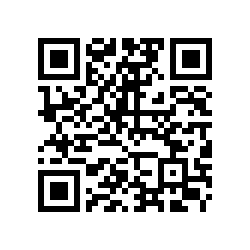Akuisisi Bukti Digital Dan Deteksi Keaslian Citra Pada Whatsapp Menggunakan Metode NIST Dan ELA
(1) Teknik Informatika, Universitas Singaperbangsa Karawang
(2) Teknik Informatika, Universitas Singaperbangsa Karawang
(3) Teknik Informatika, Universitas Singaperbangsa Karawang
(*) Corresponding Author
Abstract
Full Text:
PDFReferences
Z. Akbar, B. Nugraha, and M. Alaydrus, “Whatsapp Forensics Pada Android Smartphone : a Survey,” Sinergi, vol. 20, no. 3, p. 207, 2016, doi: 10.22441/sinergi.2016.3.006.
Kemp, S. (2020, February 18). reports. Retrieved from datareportal.com: https://datareportal.com/reports/digital-2020-indonesia.
Hariyadi, D., & Pasa, I. Y. “Identifikasi Barang Bukti Percakapan Aplikasi Dual Apps Whatsapp Pada Ponsel Xiaomi Menggunakan Metode Nist Mobile Forensics”, INTEK, Vol.1, No.1, 1-7, Mei 2018.
Muhammad, I. S., Imam, R., & Rusydi, U.“Akuisisi Bukti Digital Aplikasi Viber Menggunakan Metode National Institute of Standards Technology (NIST)”, Jurnal Sains Komputer & Informatika (J-SAKTI), Vol.4, No.1, 170-178, Maret 2020.
Ikhwan, A., Khairina, E. S., & G, U. “Analisis Barang Bukti Digital Aplikasi Facebook Messenger Pada Smartphone Android Menggunakan Metode NIJ”, IT Journal Research and Development (ITJRD), Vol.5, No.2, 118-134, Maret 2021.
Nasirudin, Sunardi, & Riadi, I. “Analisis Forensik Smartphone Android Menggunakan Metode NIST dan Tool MOBILedit Forensic Express”, Jurnal Informatika Universitas Pamulang, Vol.5, No.1, 89-94, Maret 2020.
Forensics, Magnet. (2020). Magnet Axiom User Guide. Waterloo: Magnet Forensics.
Xiaolvyuantech. (2018). ProgrammerSought. Retrieved from Article: https://www.programmersought.com/article/61453200964/.
Whatsapp. (2021). Pusat Bantuan. Retrieved from Whatsapp: https://faq.whatsapp.com/android/chats/how-to-delete-messages/.
Irwansyah, & Yudiastuti, H. “Analisis Digital Forensik Rekayasa Image Menggunakan Jpegsnoop Dan Forensically Beta”, Jurnal Ilmiah MATRIK, Vol.21, No.1, 54-63, April 2019.
DOI: http://dx.doi.org/10.30645/j-sakti.v5i2.370
Refbacks
- There are currently no refbacks.
J-SAKTI (Jurnal Sains Komputer & Informatika)
Published Papers Indexed/Abstracted By:
Jumlah Kunjungan :











